I have many pet peeves in my life. Because I am a scientific editor, many of my pet peeves revolve around abuse of the English language. The abuse that set me off most recently is the misuse of the word “theory”. These days everyone has a theory about something. For example I have a “theory” as to why I gained five pounds over the holidays: Too much rich food and egg nog! However, from a scientific standpoint, saying “I have a theory as to why I gained five pounds over the holidays” is not a proper use of the word theory. While it is likely that the food and egg nog contributed to the weight gain, I do not have a theory. The cause of the weight gain has not been scientifically scrutinized and put through rigorous testing. There isn’t a pile of scientific evidence to support my statement. What I have is a sound working hypothesis, not a theory.
Continue reading “A Scientist’s Rant about the Word “Theory””The Lighter Side of Science
Catnip and Its Effect on Cats, Dogs and Humans

Cat owners—and those that care about cats—know the power that catnip has on cats. If you own a cat and bring catnip into the house, no matter where you put it, the cat will find it.
Once the cat gets the catnip (aka catmint, nepeta) she/he will rub her/his head and shoulders on the plant, lie down on it or even dash about the house. Cats frequently chew on and eat catnip.
A report sought to explain why and how catmint affects cats. I eagerly read the report, having always been conflicted about giving catnip to my cats. Could they be killing brain cells by smelling or consuming catnip? Is it habit forming? Is catnip a gateway drug for cats? Continue reading “Catnip and Its Effect on Cats, Dogs and Humans”
Dear Santa: A Scientific Wish List
 We here at Promega Connections recently conducted an informal survey: What would you ask for in a Letter to Santa? Below are the top wishes. What would you add to the list? Continue reading “Dear Santa: A Scientific Wish List”
We here at Promega Connections recently conducted an informal survey: What would you ask for in a Letter to Santa? Below are the top wishes. What would you add to the list? Continue reading “Dear Santa: A Scientific Wish List”
The Benefit of a Cold, Dark Walk: Fall Waterfowl Migration in the Central United States
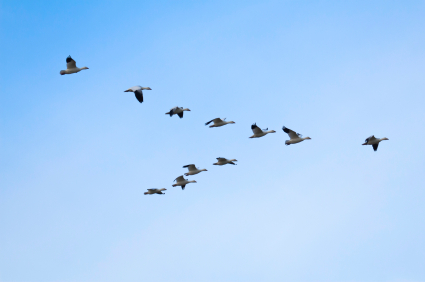 Driving to work in the morning the past several weeks, there have been occasional large flocks of geese and ducks flying . In the northern U.S. it’s time for the fall waterfowl migration south. In fact, the flock sizes have decreased in the past week, and several online sources concur that waterfowl migration has peaked, in mid December. Continue reading “The Benefit of a Cold, Dark Walk: Fall Waterfowl Migration in the Central United States”
Driving to work in the morning the past several weeks, there have been occasional large flocks of geese and ducks flying . In the northern U.S. it’s time for the fall waterfowl migration south. In fact, the flock sizes have decreased in the past week, and several online sources concur that waterfowl migration has peaked, in mid December. Continue reading “The Benefit of a Cold, Dark Walk: Fall Waterfowl Migration in the Central United States”
Avoid Multiple Freeze/Thaw Cycles: Woolly Bear Caterpillars
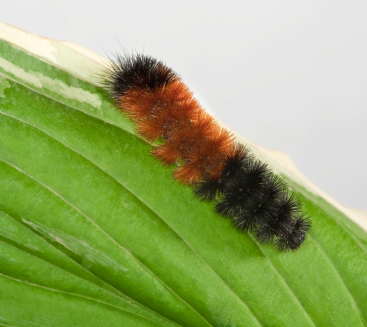 Recently, I was walking through a local park near Promega, when I spotted my first woolly bear of the season. As this furry brown and black caterpillar wandered along in front of me, I recalled the old wives’ tale about the width of their stripes being indicative of the upcoming winter fury. Spotting that little fellow in the sidewalk piqued my curiosity, and I decided to see what I could discover about my friend, the woolly bear. Continue reading “Avoid Multiple Freeze/Thaw Cycles: Woolly Bear Caterpillars”
Recently, I was walking through a local park near Promega, when I spotted my first woolly bear of the season. As this furry brown and black caterpillar wandered along in front of me, I recalled the old wives’ tale about the width of their stripes being indicative of the upcoming winter fury. Spotting that little fellow in the sidewalk piqued my curiosity, and I decided to see what I could discover about my friend, the woolly bear. Continue reading “Avoid Multiple Freeze/Thaw Cycles: Woolly Bear Caterpillars”
Odyssey of a Grad Student and the Playlist that Paved the Way
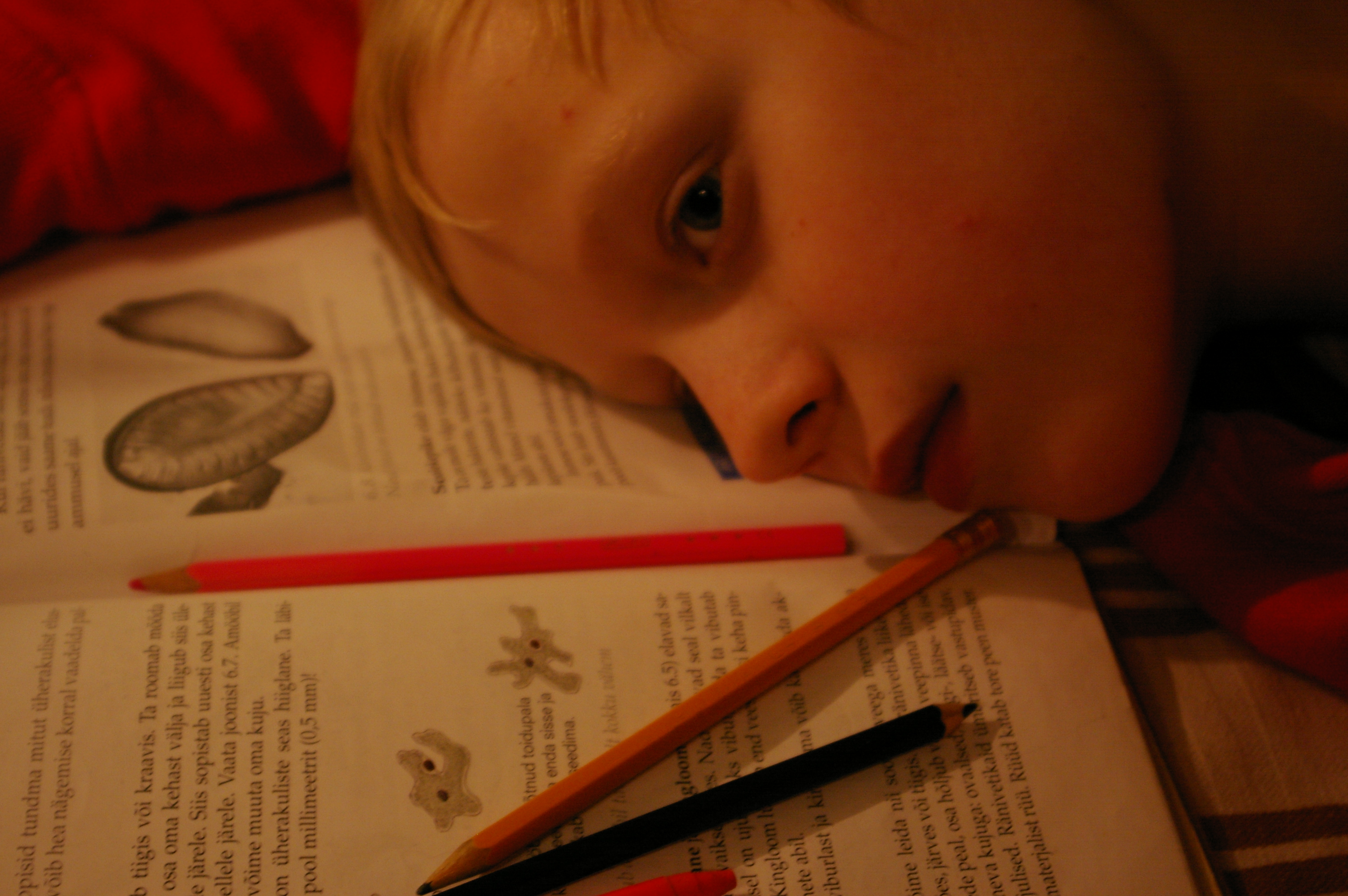 Grad school is no walk in the park. Whether the topic is English or Astrophysics, most grad students would agree that the journey to the coveted PhD can simply be described as “hard”- academically, financially, mentally. It is very important to have an outlet for the associated stress such as a hobby or exercise. My outlet was music. Music is very important in my life. It is so important that most people close to me have their own soundtrack that plays in my head when I think of them. Needless to say, music played a big part in saving my sanity during my 7.5 years in grad school. As time went on, there were several songs that marked important milestones and emotions I experienced along the way. When I defended my thesis, I decided to leave the department with a musical story of how I made it through. I created a compilation CD of all these songs to share with the department and any other struggling grad students I encountered. The CD has a custom label featuring the structure of the protein I studied, cardiac troponin C.
Grad school is no walk in the park. Whether the topic is English or Astrophysics, most grad students would agree that the journey to the coveted PhD can simply be described as “hard”- academically, financially, mentally. It is very important to have an outlet for the associated stress such as a hobby or exercise. My outlet was music. Music is very important in my life. It is so important that most people close to me have their own soundtrack that plays in my head when I think of them. Needless to say, music played a big part in saving my sanity during my 7.5 years in grad school. As time went on, there were several songs that marked important milestones and emotions I experienced along the way. When I defended my thesis, I decided to leave the department with a musical story of how I made it through. I created a compilation CD of all these songs to share with the department and any other struggling grad students I encountered. The CD has a custom label featuring the structure of the protein I studied, cardiac troponin C.
In this blog, I will share with you that playlist, entitled “Odyssey of a Grad Student,” and a description of the significance of each track. You can listen to all but one* of the songs on YouTube (http://youtu.be/8qrriKcwvlY). Click the link and listen as you read along. Continue reading “Odyssey of a Grad Student and the Playlist that Paved the Way”
Don’t Forget the Music
Many people in the United States of America will be celebrating the country’s Independence Day by gathering with family, grilling and consuming food, and watching a Chinese invention explode overhead in many shapes and colors. I am partial to the ones my family calls boomers consisting of a small circular white flash of light and an explosion of sound that vibrates my chest.
The American Automobile Association (AAA) predicts that 32.8 million Americans will travel at least 50 miles from home over the July 4th weekend; 84% of those will travel by auto. Continue reading “Don’t Forget the Music”
Paying it Forward: A Promega Employee’s Experience With the American Chemical Society
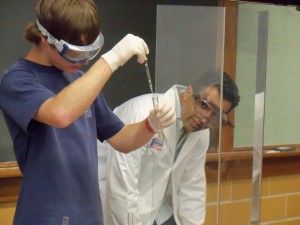 If you are a scientist you know the American Chemical Society (ACS) for their high quality journals (all 39 of them) and for their annual meetings and conferences. But did you know the ACS also focuses on community education and outreach? The ACS mission is “Improving people’s lives through the transforming power of chemistry.” According to their website, ACS has 189 local chapters at colleges and universities around the country. Bharat Mankani (in the white coat in the photo) tells us about his work with the ACS chapter at Texas A&M.
If you are a scientist you know the American Chemical Society (ACS) for their high quality journals (all 39 of them) and for their annual meetings and conferences. But did you know the ACS also focuses on community education and outreach? The ACS mission is “Improving people’s lives through the transforming power of chemistry.” According to their website, ACS has 189 local chapters at colleges and universities around the country. Bharat Mankani (in the white coat in the photo) tells us about his work with the ACS chapter at Texas A&M.
1. How long have you worked here at Promega and what do you do? Continue reading “Paying it Forward: A Promega Employee’s Experience With the American Chemical Society”
Slightly More than Half of Everything I Am Is Thanks to You
In honor of Mothers everywhere, we are unashamedly recycling this post because it’s just that good.
Paying it Forward: A Promega Employee’s Experience with the Dane County Humane Society
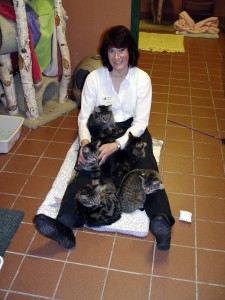 Promega employees earn their living researching, marketing, manufacturing, writing, teaching, shipping, and designing. What do they do when they are off the clock? For the next few months, I will post interviews with my coworkers describing how they give back to their communities in their spare time. This month, Nadine Nassif describes her work with the Dane County Humane Society (DCHS) and their groundbreaking ringworm treatment. The photo on the left shows Nadine keeping some cats company during a DCHS event.
Promega employees earn their living researching, marketing, manufacturing, writing, teaching, shipping, and designing. What do they do when they are off the clock? For the next few months, I will post interviews with my coworkers describing how they give back to their communities in their spare time. This month, Nadine Nassif describes her work with the Dane County Humane Society (DCHS) and their groundbreaking ringworm treatment. The photo on the left shows Nadine keeping some cats company during a DCHS event.
How long have you worked here at Promega and what do you do?
I joined Promega in November 1997, so just over 13 years. I’m a research scientist in the Genetic Analysis group.
(Author’s note: Nadine develops kits that are used by researchers for purifying DNA and studying gene expression.)
What do you do at DCHS?
Most of the work I do with Dane County Humane Society involves the cat population. Specifically:
- Cleaning cages and feeding the cats.
- Socializing cats; in particular, the ones that are shy or scared or over-stimulated, the ones that need the extra attention in order to acclimate to the busy shelter environment and find a home.
- Shooting and editing YouTube videos for the shelter; some of the videos spotlight various cats and dogs that are available for adoption, while some highlight various programs that the shelter is trying to promote.
- Fostering cats in my home, often kittens that are too small to be available for adoption; I raise them until they’re about 9 weeks old, at which point they can be neutered and are sent back to the shelter to find new homes.

